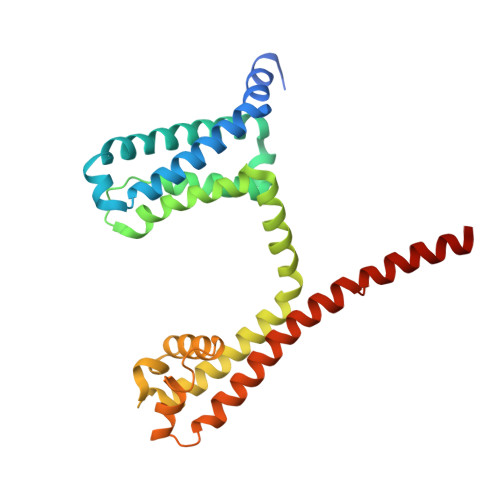Structural basis for severe pain caused by mutations in the voltage sensors of sodium channel NaV1.7.
Wisedchaisri, G., Gamal El-Din, T.M., Powell, N.M., Zheng, N., Catterall, W.A.(2023) J Gen Physiol 155
- PubMed: 37903281
- DOI: https://doi.org/10.1085/jgp.202313450
- Primary Citation of Related Structures:
8DIV, 8DIW, 8DIX, 8DIY - PubMed Abstract:
Voltage-gated sodium channels in peripheral nerves conduct nociceptive signals from nerve endings to the spinal cord. Mutations in voltage-gated sodium channel NaV1.7 are responsible for a number of severe inherited pain syndromes, including inherited erythromelalgia (IEM). Here, we describe the negative shifts in the voltage dependence of activation in the bacterial sodium channel NaVAb as a result of the incorporation of four different IEM mutations in the voltage sensor, which recapitulate the gain-of-function effects observed with these mutations in human NaV1.7. Crystal structures of NaVAb with these IEM mutations revealed that a mutation in the S1 segment of the voltage sensor facilitated the outward movement of S4 gating charges by widening the pathway for gating charge translocation. In contrast, mutations in the S4 segments modified hydrophobic interactions with surrounding amino acid side chains or membrane phospholipids that would enhance the outward movement of the gating charges. These results provide key structural insights into the mechanisms by which these IEM mutations in the voltage sensors can facilitate outward movements of the gating charges in the S4 segment and cause hyperexcitability and severe pain in IEM. Our work gives new insights into IEM pathogenesis at the near-atomic level and provides a molecular model for mutation-specific therapy of this debilitating disease.
Organizational Affiliation:
Department of Pharmacology, University of Washington, Seattle, WA, USA.
















